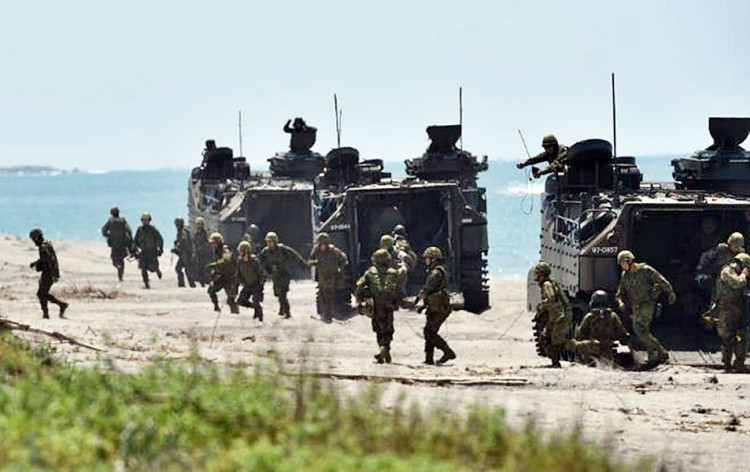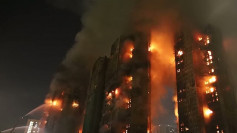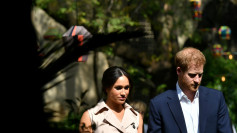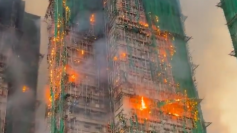For the first time since the end of World War II, Japanese soldiers are training for war overseas, but this time with three of its major allies in Asia: the United States, the United Kingdom and the Philippines.
Elite British Army troops belonging to the Honourable Artillery Company (HAC) are currently training with men of the Japan Ground Self-Defense Force (JGSDF) as part of Exercise VIGILANT ISLES. HAC is the British Army's Reserve intelligence, surveillance and reconnaissance regiment.
On Oct 4, 50 soldiers from the HAC were deployed to the Fuji Training Camp on the slopes of the iconic Mount Fuji where they trained with their counterparts from the JGSDF. The training will end the week after next.
This is the first time anyone in the Regiment or the British Army has had the opportunity to train alongside the Japanese Ground Self Defence Force, said HAC Commanding Officer Lt. Col. Mark Wood. He noted that it's an incredible privilege to be at the vanguard.
In a clear indication of the importance of VIGILANT ISLES to Britain, Lt. General Patrick Sanders, Commander Field Army, visited the British troops at Fuji on Oct. 2. Gen. Sanders said Japan remains one of Britain's most important strategic partners in the Asia-Pacific region.
He noted Britain welcomes the opportunity to develop strong bilateral ties with Japan. He also said no nation operates alone and the UK wants to assure Japan "they will not have to fight alone either."
He pointed out that stability in Asia is essential to stability around the world. Gen. Sanders emphasized the UK is opposed to any change in the status quo by force, an indirect reference to China's moves towards hegemony in Asia.
More pointedly, he said VIGILANT ISLES is designed "to promote peace and stability in the region with our natural partners whose values of respect and democracy we share."
In the Philippines, JGSDF infantry took part in an amphibious assault exercise along with troops from the Philippine Marines and the United States Marine Corps last week. This is the first time since World War II that a military unit of Japan's army has been deployed to a foreign country.
The Philippines was the scene of the greatest defeat inflicted on the Imperial Japanese Army in World War II. More than 400,000 Japanese soldiers perished in their ill-fated attempt to defend the Philippines against invading United States military forces and large groups of Filipino guerrillas from October 1944 to September 1945.
The JGSDF troops that took part in a mock beach assault at the province of Zambales north of the capital city Manila stormed ashore in their U.S.-made AAV-P7/A1s. These assault amphibious vehicles are also the first Japanese armored vehicles Japan has deployed in a foreign country since World War II.
The Americans pointed out the exercise, which is codenamed "Kamandag" (the Filipino word for venom), isn't directed at any country, but was staged amid heightened tensions with China.
Some 150 JGSDF soldiers are taking part in Kamandag, which started Oct. 2 and will end Oct. 11. These men and their AAV-P7/A1s engaged in military exercises simulating an assault on territory captured by a terrorist group along with U.S. Marines and Philippine Marines on Oct. 6. The Japanese, Americans and Filipinos also practiced humanitarian operations.
JGSDF Major Koki Inoue said Japanese infantry didn't take part in the combat portion of the exercise. He did admit Kamandag was the first time the Japanese military's armored vehicles had been used on foreign soil since World War II.
Maj. Inoue said the JGSDF's purpose in joining Kamandag is to improve its operational capability. He also said the exercise is a very good opportunity for JGSDF to improve its humanitarian assistance and disaster relief training.
Exercise Kamandag began in 2017 and has focused on counterterrorism, disaster response, and interoperability. Kamandaag is an acronomy for the Filipino phrase, "Kaagapay Ng Mga Mandirigma Ng Dagat." This translates into "Cooperation of Warriors of the Sea."






